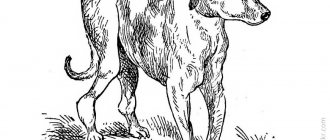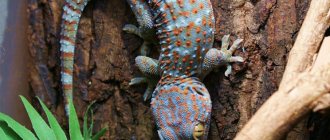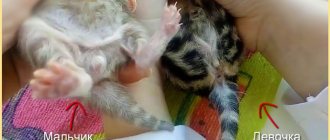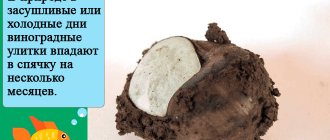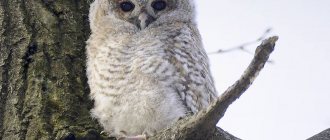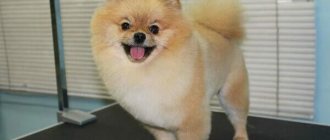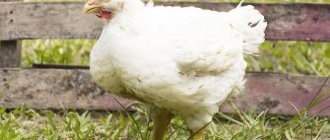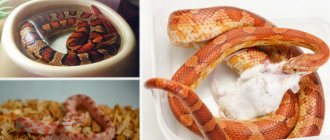Rickets in kittens is also called a growth disease, since it develops against the background of a deficiency of vitamins and minerals necessary for the growing body. For various reasons, there is an acute imbalance between the need and transport of minerals in the bones. First of all, the growing skeleton and nervous system suffer from this imbalance, and therefore the consequences of rickets are often irreversible and accompany the kitten for the rest of its life.
This condition can also occur in adult cats. In this case, the disease is called osteoporosis. The first symptoms of the disease are a sharp slowdown in growth, lethargy, and apathetic behavior of animals. From this article you will learn what this pathology is, the causes of its occurrence, the main symptoms, as well as how to treat rickets in animals and what preventive measures exist.
General information
The disease is manifested by changes in the musculoskeletal system (softening and curvature of bones, deformation of the chest, muscle hypotension). In addition, there is a serious disturbance of protein metabolism and microelement balance.
With the natural method of feeding, it is often overlooked that meat, liver and other products that make up the animal’s diet contain insufficient amounts of calcium, vitamin D, and phosphorus. But this is the main factor leading to the secondary type of rickets, as well as osteoporosis in cats.
Poor mineralization of bone tissue in young cats causes its excessive resorption (destruction) in mature pets. This disorder leads to increased bone fragility, osteomyelitis and other pathologies.
That is why owners need to remember that the content of calcium, phosphorus and vitamin D in their pets’ diet should be ideal or strive for this value. A good solution to this problem is to switch to professional premium and super-premium food. This is especially important for kittens and pregnant cats.
Causes of the disease
There are two types of rickets in kittens: primary (or congenital) and secondary (acquired). The main factor that increases the likelihood of congenital rickets is improper and insufficient care for the cat during pregnancy.
Secondary rickets occurs when gross errors in nutrition and care are made. It can also develop as a complication of chronic diseases of the gastrointestinal tract, liver, kidneys or thyroid gland.
The main cause of rickets is endogenous (congenital) deficiency of vitamin D, as well as its insufficient exogenous (associated with external causes) synthesis. In addition, the causes of the disease may be an imbalance of calcium, phosphates and other osteogenic (involved in the construction of bone tissue) macro- and microelements.
Factors provoking primary rickets
The main factors provoking congenital rickets are the following:
- Lack of the amino acid taurine in the body of a pregnant cat. This leads to disruption of the development of the fetal bone skeleton.
- Insufficient consumption of protein foods during pregnancy can also lead to pathologies in the intrauterine development of embryos.
- Lack of vitamins A, E, D, C in the mother’s body, as well as trace elements calcium, phosphorus and magnesium are the main causes of rickets in newborns.
- Frequent matings (more than once a year) negatively affect the animal’s body, depleting it. This subsequently leads to the birth of weakened and sick offspring.
- Incorrect selection of pairs during mating (in particular, inbreeding) has a great influence on the appearance of congenital rickets.
- Participation in matings of cats with obvious health problems: exhausted, with genetic pathologies or excess weight also poses a high risk of congenital rickets and other diseases.
- Early mating is extremely undesirable for the same reason.
Factors provoking secondary rickets
The main factors provoking secondary rickets are:
- Violation of the conditions of care and maintenance of kittens and young animals. These include: keeping them in conditions of lack of sunlight, extreme humidity and stuffiness.
- Feeding babies not with mother's milk, but with substitutes. This provokes metabolic failure, forming low immunity and laying the foundation for future health problems (including rickets).
- An early transition from milk feeding to solid food is also undesirable.
- An unbalanced kitten diet and the lack of vitamin and mineral supplements (which includes vitamin D) when switching to adult food often lead to rickets.
- Diseases of the gastrointestinal tract, in which the process of absorption of nutrients through the intestinal walls is disrupted, kidney pathologies, disruption of the endocrine glands - all this provokes the development of rickets in kittens and osteoporosis in adults.
Signs of rickets in kittens
How can you tell if a kitten has rickets soon after it is born? In fact, there are no particular difficulties with this. If the pathology is congenital, then the appearance of the animal is sad.
- Babies have strangely curved and seemingly “twisted” paws.
- The kittens are constantly squeaking and literally screaming. This happens because they are simply in pain.
- Pets with rickets are far behind their healthy relatives in development; their eyes open very late. The claws of these animals are soft, sometimes they literally peel apart before our eyes.
If you see signs of rickets in a kitten, do not rush to immediately take him to the veterinarian. Take his mother (and all his brothers and sisters) with you. If a baby who EATS only mother's milk has problems with a lack of vitamin D and Ca, then the cat's health is probably not all right. In a word, the help of a specialist will not hurt all your pets.
Main symptoms
The first symptoms of rickets make themselves felt during the period of rapid growth of the bone skeleton and the development of internal organs and systems. It all starts with a developmental delay. Rickety kittens are smaller in size. They are characterized by unsociability, a desire to be at rest, and a lag in conditioned reactions. Painful changes in the body at this stage are still reversible and can be easily corrected. The initial stage of rickets can be cured.
The next stage of the disease is called the high stage and includes the following symptoms:
- enlarged joints;
- curved tubular bones;
- sagging back and large belly (as evidence of decreased muscle tone);
- problems with tooth growth;
- unsteady gait.
Such changes are more difficult to correct. The consequences of the disease often remain with the animal for life.
The final stage of rickets is painful changes in internal organs and systems. The gastrointestinal tract, respiratory and nervous systems are most affected. This is evidenced by frequent diarrhea, chronic shortness of breath, and cough. Convulsions and problems with coordination of movements may occur. This condition threatens the baby’s life if treatment is delayed.
Is vitamin D always to blame?
Almost all owners are inclined to believe that rickets can develop solely due to a lack of vitamin D. To replenish it, they begin to give the animals fish oil in large quantities. In this case, the vitamin deficiency can actually be replenished (sometimes there is an excess of it in the body), but the disease remains. Moreover, it begins to imperceptibly undermine the baby’s health, sometimes remaining in his body throughout his life.
Rickets can also develop due to calcium deficiency. No matter how much vitamin D is supplied, bone tissue does not grow enough due to calcium deficiency. This is how the symptoms of rickets arise. If there is too much phosphorus in the blood, it begins to block the absorption of calcium, causing the body to suffer.
Diagnostic methods
The main measures aimed at confirming or excluding the diagnosis of rickets are as follows:
- A biochemical blood test allows you to determine the content of calcium and phosphorus in it, on the basis of which a conclusion is made about the presence of prerequisites for the disease rickets. In a biochemical study of cat urine, rickets is indicated by hyperaminoaciduria (impaired amino acid metabolism in the kidneys), hyperphosphaturia (increased presence of phosphates in the urine sediment), hypocalciuria (pathologically low calcium content in the urine).
- X-ray examination of the spine and tubular bones makes it possible to see low bone density, deformation of the chest, curvature of the bones, thickening of the rib bones at the ends. This is a direct indication that the animal is sick.
Differential diagnosis is also necessary, since the symptoms of rickets may be similar to the signs of hyperparathyroidism, an endocrine pathology based on excess production of parathyroid hormone by the parathyroid glands. The disease also needs to be differentiated from SCH (Secondary feeding hyperparathyroidism) - false rickets, the causes of which lie in improper feeding of the kitten.
Diagnosis
As we have already indicated above, a sufficiently experienced specialist will be able to determine the presence of the disease by its specific signs. Despite this, it is much preferable not to wait for the appearance of pronounced symptoms, but to diagnose rickets by changes in the biochemical characteristics of the blood .
A characteristic feature of many cases of rickets is a sharp and very strong increase in the level of parathyroid hormone in the blood serum. Interestingly, at the same time, the thyroxine level (as a rule) remains within normal limits.
Based on similar results of many studies, some veterinarians have concluded that chronic hyperparathyroidism (increased secretion of parathyroid hormones) is directly related to rickets.
In addition, an X-ray examination is required. X-rays will show a weakening of the bone structure, as well as the presence of deformations and thickening of the bones. One of the characteristic signs of rickets is the appearance of “rosaries,” that is, thickenings at the ends of the ribs.
Treatment of the disease
Treatment tactics for rickets consist of solving the following problems:
- saturating the body with calcium and phosphorus;
- elimination of hypovitaminosis;
- restoration of the functioning of affected organs and systems;
- eliminating deficiencies in feeding and care, balancing the diet.
The following treatment methods are most effective:
- Intravenous injections of calcium preparations.
- Prescription and long-term intake of fish oil rich in vitamin D.
- Taking medications that support heart function (Cordiamin, magnesium supplements).
- If the function of the gastrointestinal tract is impaired, with frequent diarrhea, enzyme preparations, enveloping agents, as well as probiotics and prebiotics that normalize intestinal function are prescribed.
- The cat is transferred to specialized and medicinal premium food that eliminates vitamin and mineral deficiencies.
- When eating a natural diet, special attention is paid to the presence in the diet of beef or chicken meat, lactic acid products (especially cottage cheese), boiled and fresh vegetables.
- Physiotherapy is effective. Therapeutic massage improves impaired tissue trophism and fluid circulation in the body, and irradiation with a quartz lamp saturates the body with vitamin D through the skin.
- Physical activity and good physical activity help ensure good absorption and saturation of tissues with the missing mineral elements.
Calcium restoration
To restore this essential mineral you will need:
- give intravenous injections of calcium-containing drugs (done only by veterinarians in a clinic);
- correction of the kitten’s diet with the introduction of fermented milk products and fish (in no case river fish);
- choose a special type of food enriched with calcium and other minerals.
Consequences of the disease
If adequate treatment of rickets is not carried out on time, the kitten will face severe consequences, sometimes incompatible with life:
- severe deformation of the bones leads to disability of the animal;
- joint inflammation causes severe pain;
- disruption of the functioning of internal organs is manifested by a lack of digestibility of food, convulsions, and breathing problems;
- exhaustion gradually reaches extremes, painful changes in the body increase.
Prevention of the disease
In order not to have to treat rickets in a kitten, the owner needs to carry out constant prevention. After all, the disease can threaten animals of any age if not properly cared for. The main measures to prevent rickets are:
- balanced nutrition for cats;
- additional administration of vitamins and microelements involved in the formation and maintenance of bone health;
- timely implementation of routine vaccinations;
- a competent approach to formulating a diet (especially when using natural food) with the participation of the treating veterinarian;
- providing kittens with walks in the fresh air and physical activity.
It is very important to pay great attention to caring for a pregnant cat and feeding it properly. Only in this case can one hope to obtain healthy and full-fledged offspring from her.
Preventive actions
What to do to protect your pets from such an insidious disease as rickets:
- Responsibly approach reproduction. Select partners for your cat wisely: avoid mating sick individuals and relatives. Limit the number of cat pregnancies - no more than twice in three years.
- Organize enhanced, balanced nutrition for the pregnant cat with high-quality food.
- Walk the cat “in position” more often during the daytime.
- Follow the hygienic rules for raising kittens: maintain the required temperature and humidity in the room, arrange regular ventilation. The normal temperature for newborns is 31°C, then it gradually decreases by 4°C. Humidity – 55-65%.
- Provide young animals with adequate sun exposure.
- Feed “artificial” ones only with special high-quality mixtures for kittens.
- Wean kittens from mother's milk only at the age of 2.5 months.
- Conduct timely deworming and vaccination.
- As prescribed by the veterinarian, give vitamin-mineral complexes with microelements involved in the formation of the bone apparatus.
- Provide kittens with sufficient physical activity. Let them play with mom and other kittens. Play with them more.
Choose the best toys so that kittens can play more.
Remember that rickets (hypovitaminosis D) is often the result of insufficient attention to furry pets. This disease does not forgive human carelessness and negligence. If left unattended, it progresses quickly and can lead to sad irreversible consequences.
Video
